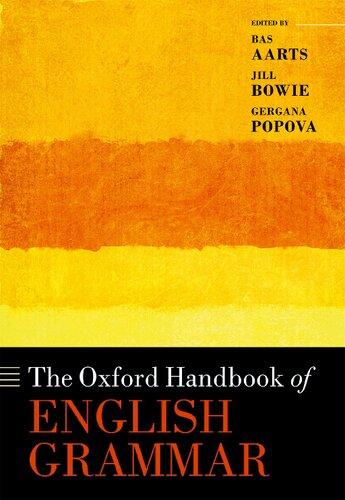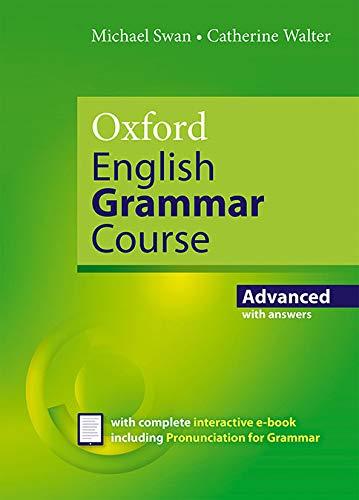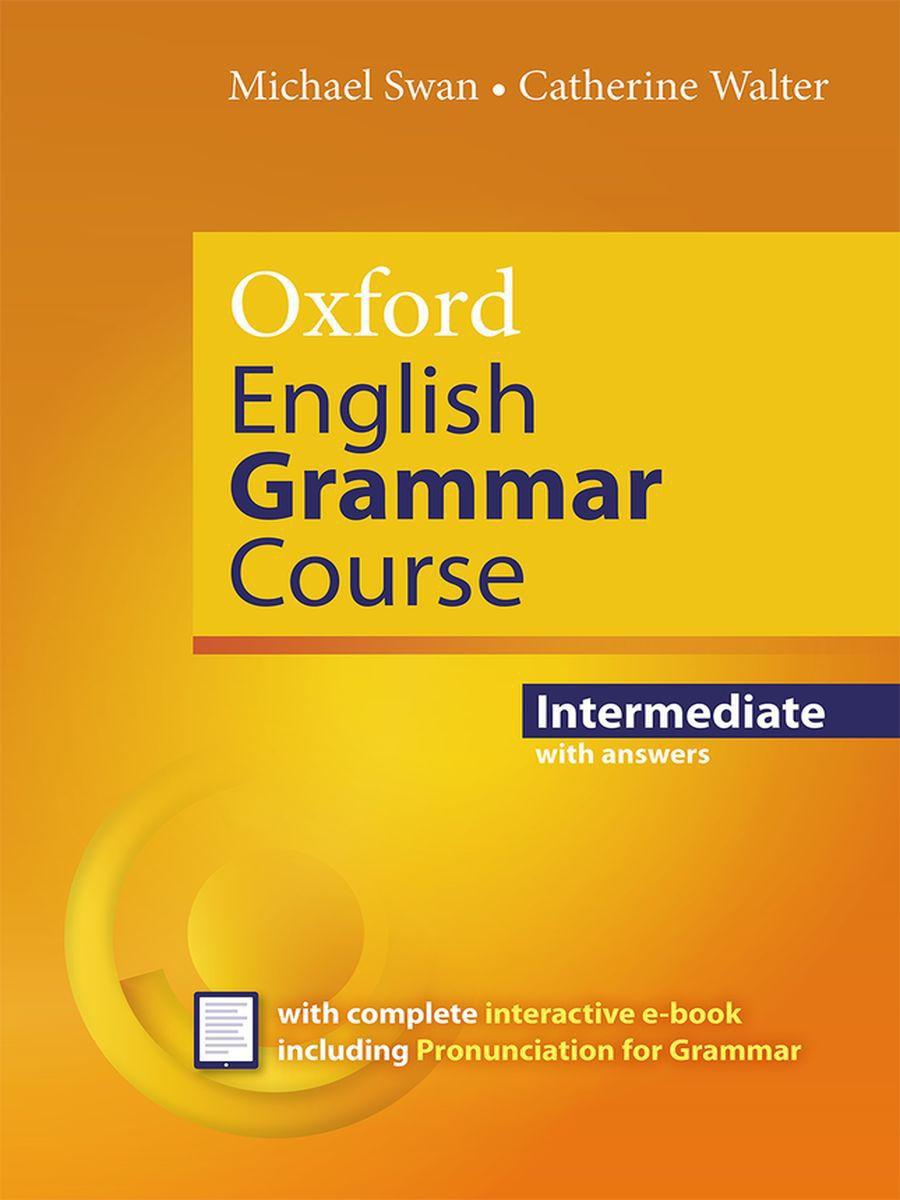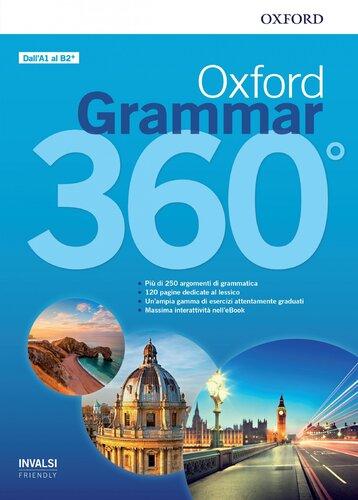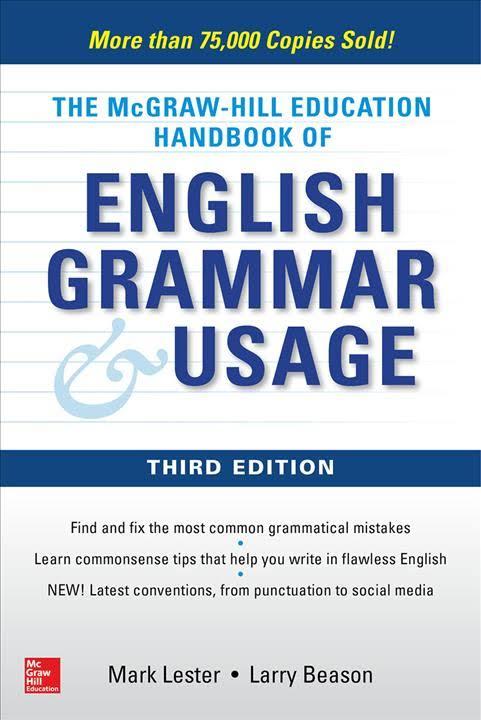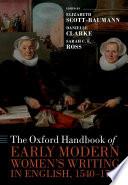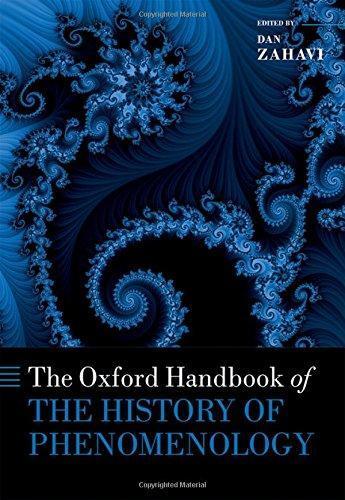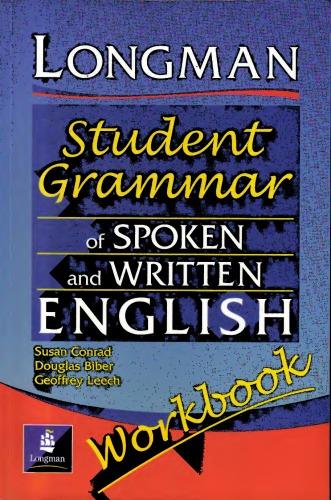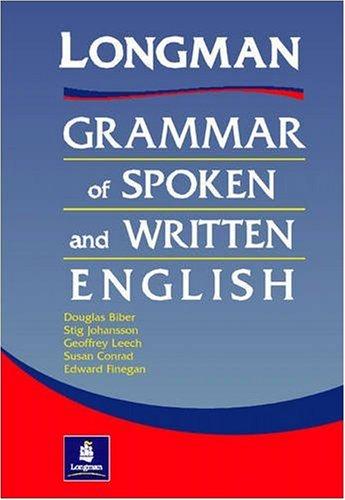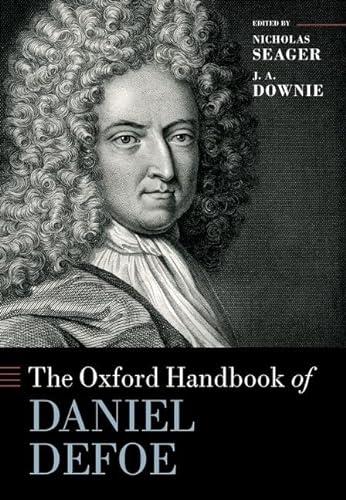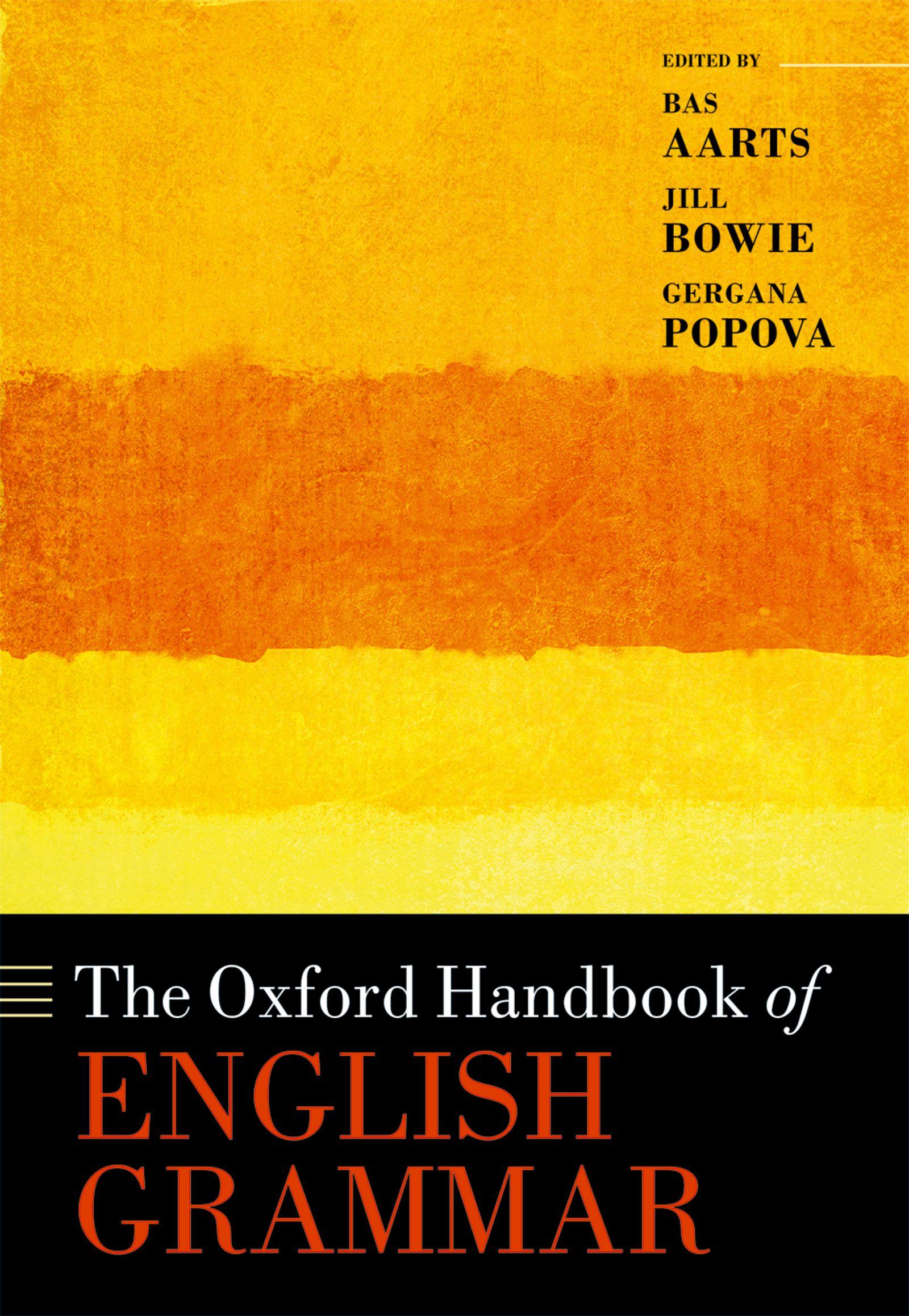PARTIVGRAMMARANDOTHERFIELDS OFENQUIRY
.Grammarandlexis
.Grammarandphonology
S
.Grammarandmeaning
.Grammaranddiscourse
.Changeingrammar
.RegionalvarietiesofEnglish:Non-standardgrammaticalfeatures
.GlobalvariationintheAnglophoneworld
.Genrevariation
.Literaryvariation
References
Nameindex
Subjectindex
Figures
. Lumpingofnounsandpronouns
Reassignmentofadjunctizerstotheprepositionclass
. Threeillustrationsofthetypesofinformationavailablefrom acceptabilityjudgements
. Thevisuallogicof factorialdesigns,illustratedusingthe whether-islandeffectdesign
. Threetypesofevidence
. The Aperspectiveincorpuslinguistics
. ExampleofaKeyWordinContextconcordanceforthelexicalitem school inICE-GB,showingadjacentwordclasslabels
. AFuzzyTreeFragmentforanadjectivephrase(AJP)containinga generaladjectivehead(AJHD,ADJ(ge))withatleastone premodifier(AJPR)andonepostmodifier(AJPO)
. Asimplegrammaticalconcordance
Examininganylineintheconcordancedisplaysthesentenceand phrasestructuretree,showinghowtheFTFmatchesatreein thecorpus
Comparingfrequencydistributionsoverdifferenttimeperiods
. FTFforretrievingapositive(‘ ¬neg ’ =notnegative)auxiliaryverb, verborVP(‘∨’ = ‘ or ’),followedbyatagquestionwithanegative auxiliaryorverb
aDependencyrepresentationof inthekitchen
.bDependencytreediagramof inthekitchen
Stemmarepresentingthestructuralorderof()
.aPhrasestructure(constituentstructure)of()
bDependencystemmaof()
.cDependencyrepresentationof()
. Dependencystemmaof()
. Representationoftransferinthecaseof dePierre and Pierre’
. Stemmafor Thenshechangedhermind
. Dependencyrepresentationofditransitive give inWordGrammar
. DependencyrepresentationofcoordinationinWordGrammar
Semanticdependencyof LeosentalettertoAlan
. Syntacticandsemanticdependenciesofcomplementsand modifiersofw
.aAnalysisofgrammaticalnon-projectivestructure Thatpizza Iwillnoteat withcrossinglines
.bAnalysisof ThatpizzaIwillnoteat involvingrising
.aAnalysisof()withoutrising
bAnalysisof()withrising
Theditransitiveconstruction
. Structureof whosebookeveryonesaidtheyhadenjoyed
. DiagramsofNPswithDeterminer-HeadandModifier-Headfunction fusion
DiagramofafusedrelativeNPwithHead-Prenucleusfunctionfusion
. Diagramofthenounphrase thisonce whichcontainsafused Modifier-Head
. Thebasicstructureofclausetypes
Lambrecht’s()assumedmentalrepresentationofdiscourse referents(alternativetermsbyPrinceandChafeinbrackets)
. Networkofchoicesassociatedwith her
. InvertedT-model
Apartialschemanetworkforaverb(adaptedfromTaylor
. Thegrammaticalizationchainforthemodalidiom (had)better in theLateModernPeriod
. BeingtoV andsemi-modal havingtoV (frequencypermillionwords) intheOBPcorpus
. Proportionofperiphrasticconstructionsandmandativesubjunctives intheBrownfamilyofcorpora
. DiachronicdevelopmentofcoremodalsintheBrown-familyof corpora
Diachronicdevelopmentofsemi-modalsintheBrown-familycorpora
. Morphosyntacticdistinctionsalongacontinuumof
individuality
. Correspondencesbetweennon-standardandstandardtenseuse
. Map ‘Giveitme’,takenfrom AnAtlasofEnglishDialects byClive UptonandJ.D.A.Widdowson(: )
. GlobalnetworkfortheentireWAVEfeatureset(N= )
TenseandAspectnetworkinWAVE
. NeighborNetclusteringofL varietiesinWAVE
Tables
. Contingencytableoffrequenciesexploringtheinteractionbetween thepolarityofquestiontagsandthepolarityofprecedingverbphrases, extractedwithFTFsandthenmanuallyreviewed.Theverbphrase andtagneverbothhaveanegativepolarityinall cases
.
Wordclassandfeaturematrix
Themajorclausetypes
Clausetypes,meanings,andliteralforces
Simpleandprogressiveformsofthe ‘tenses’
. Vendler’ s Aktionsart classesandtheirdefiningfeatures
Mainfunctionsof finitesubordinateclauses
. Mainfunctionsofnon-finitesubordinateclauses
. Coordinationinandofphrases
. Prince’s()modelofhearer-statusanddiscourse-statusand correspondenceswithLambrecht()andPrince(a)
. Wordclass-phonologygeneralizations(adaptedfromMonaghan etal.
: –)
. InflectionalparadigmforOE bīdan ‘await’ (basedonHoggand Fulk
.
: )
Full-verb,mixed,andauxiliarysyntaxof dare ininterrogative andnegatedsentencesintheBrown-familycorporaofAmerican andBritishEnglish(AmEandBrE)
. Logicaltypesofuniversalstatement(followingGreenberg),taken fromEvansandLevinson(: )
Asymmetricalparadigms(adaptedfromAnderwald
Seventy-sixvarietiesinWAVE:worldregions
. DomainsofgrammarcoveredinWAVE( featuresinall)
. Geographicalcompositionoftheclustersintheglobalnetwork
. Vernacularangloversals:top ( %)
. Vernacularangloversals:toprunners-up( %)
.
TopdiagnosticfeaturesofL varieties(AR %,ARdifference
%),sortedbyARdifference
TopdiagnosticfeaturesoftraditionalL varieties(AR %, ARdifference %),sortedbyARdifference
Topdiagnosticfeaturesofhigh-contactL varieties(AR %, ARdifference %),sortedbyARdifference
.
TopdiagnosticfeaturesofL varieties(AR %,ARdifference
%),sortedbyARdifference
. ThemostdiagnosticfeaturesofEnglish-basedpidginsandcreoles (ARofP/Cs %,ARdifference %),sortedbyARdifference
.
DiagnosticmorphosyntacticfeaturesperAnglophoneworldregion (ARdifferenceregion – restofworld %; * formedium-frequency features, ** forhigh-frequency/pervasivefeatures)
. TopdistinctivefeaturesfortheBritishIsles
. TopdistinctivefeaturesforAfrica
. TopdistinctivefeaturesfortheAustraliaPacificregion
BasAarts isProfessorofEnglishLinguisticsandDirectoroftheSurveyofEnglish UsageatUniversityCollegeLondon.Hispublicationsinclude: SyntacticGradience (,OUP), OxfordModernEnglishGrammar (,OUP), TheVerbPhrasein English (,editedwithJ.Close,G.Leech,andS.Wallis,CUP), OxfordDictionary ofEnglishGrammar (editedwithS.ChalkerandE.Weiner, ndedition ,OUP), HowtoTeachGrammar (withIanCushingandRichardHudson, ,OUP),aswell asbookchaptersandarticlesinjournals.Heisafoundingeditorofthejournal English LanguageandLinguistics (CUP).
AshAsudeh isaProfessorintheDepartmentofLinguisticsandtheDirectorofthe CenterforLanguageSciencesattheUniversityofRochester.Hehasheldpositionsat CarletonUniversity,intheInstituteofCognitiveScience,andatOxfordUniversity, wherehewasProfessorofSemanticsintheFacultyofLinguistics,Philology,and PhoneticsandaSeniorResearchFellowatJesusCollege.Hisresearchinterestsinclude syntax,semantics,pragmatics,languageandlogic,andcognitivescience.Hehas publishedextensivelyonthesyntax–semanticsinterface,particularlyintheframeworksofLexicalFunctionalGrammarandGlueSemantics.
LaurieBauerFRSNZ isEmeritusProfessorofLinguisticsatVictoriaUniversityof Wellington,NewZealand.Heistheauthorofmorethantwentybooksonlinguistic topics,particularlyonmorphologyandword-formation.Hewasoneoftheinaugural editorsofthejournal WordStructure. TheOxfordReferenceGuidetoEnglishMorphology,whichheco-wrotewithRochelleLieberandIngoPlag,receivedtheLinguistic SocietyofAmerica’sLeonardBloomfieldPrizein .In hewasawardedthe RoyalSocietyofNewZealand’sHumanitiesmedal.
RobertD.Borsley isProfessorEmeritusattheUniversityofEssex,whereheworked from to ,andHonoraryProfessoratBangorUniversity,whereheworked from to .HehaspublishedextensivelyonthesyntaxofEnglishandWelsh, andonotherlanguages,includingBreton,Polish,andArabic.Hehasworkedmainly withintheHead-drivenPhraseStructureGrammarframeworkandhasmadeavariety ofcontributionstoitsdevelopment.Hewasa JournalofLinguistics Editorfrom to .
JillBowie isanHonoraryResearchFellowattheSurveyofEnglishUsage,University CollegeLondon,whereshepreviouslyworkedontheAHRC-fundedprojects ‘The changingverbphraseinpresent-dayBritishEnglish’ and ‘TeachingEnglishgrammar
inschools’,ledbyBasAarts.SheholdsaPhDfromtheUniversityofReadingandaBA andMAfromtheUniversityofQueensland.Herresearchinterestsincluderecent changeinEnglishandthegrammarofspokendiscourse.Shehasco-authoredpapers withSurveycolleaguesonclausefragmentsandonchangesintheEnglishverbphrase.
IanCushing isalecturerintheDepartmentofEducationatBrunelUniversityLondon. Hehasabroadrangeofteachingandresearchinterests,includingappliedcognitive linguistics(especiallyineducationalcontexts),criticallanguagepolicy,and pedagogicalgrammar.Heistheauthorof TextAnalysisandRepresentation (, CUP), LanguageChange (,CUP),andaco-authorof HowtoTeachGrammar (,OUP,withB.AartsandR.Hudson),aswellasvariousjournalarticlesandbook chapters.
IlseDepraetere isProfessorofEnglishLinguisticsattheUniversityofLille.Sheisa memberoftheresearchgroup Savoirs,Textes,Langage (UMR STL).Shehaspublished widelyontense,aspect,andmodality,thesemantics/pragmaticsinterfacebeinginthe foregroundofherpublications.Sheistheco-authorwithChadLangfordof Advanced EnglishGrammar:ALinguisticApproach ( (ndedn),Bloomsbury)andsheco-edited withRaphaelSalkie SemanticsandPragmatics:DrawingaLine (,Springer).
HeidrunDorgeloh isSeniorLecturerinEnglishLinguisticsattheHeinrich-HeineUniversityDüsseldorfwithaspecializationinsyntax,discourseanalysis,andprofessionalvarietiesofEnglish.ShewroteherdissertationonEnglishwordorder,notably subject–verbinversionasitisusedindifferentgenres,followedbyaseriesofresearch onthefunctionandmeaningofgrammaticalconstructionsinprofessionalcontexts. Herresearchinterestsincludetheinterrelationshipofnon-canonicalsyntaxand discourse,theevolutionofgenres,andregistersandgenresofvariousprofessions, suchasscience,medicine,andlaw.
PatrickDuffley isProfessorofEnglishLinguisticsatUniversitéLavalinQuebecCity. Hehaspublishedmonographsontheinfinitive,thegerund-participle,andcomplementationinEnglish,aswellasanumberofarticlesonmodalauxiliaries, wh-words, negativepolarity,andindefinitedeterminers.Hisworkutilizesconceptsinspiredby cognitivegrammarandGuillaumianpsychomechanicaltheoryinordertodevelopa semantico-pragmaticapproachtogrammarandsyntax.Herecentlypublisheda monographwithJohnBenjaminsapplyingthisapproachtothephenomenonofsubject versusnon-subjectcontrolwithnon-finiteverbalcomplementsinEnglish.
ThomasEgan isEmeritusProfessorofEnglishLinguisticsatInlandNorwayUniversity ofAppliedSciences.Hisresearchinterestsencompasstopicswithintheareasof corpuslinguistics,contrastivelinguistics,cognitivelinguistics,andhistoricallinguistics, includinggrammaticalization.Heistheauthorofamonographoncomplementation, entitled Non-FiniteComplementation:AUsage-BasedStudyofInfinitiveand-ingClauses inEnglish (,Rodopi).Morerecentlyhehas(co-)authoredsomedozenarticles
contrastingvariousprepositionalconstructionsinEnglishandFrenchand/orSwedish andNorwegian.
LilianeHaegeman isProfessorofEnglishLinguisticsatGhentUniversityinBelgium andisamemberoftheDiaLing DiachronicandDiatopicLinguisticsresearchgroup. From to ,shewasProfessorofEnglishLinguisticsattheUniversityofGeneva (Switzerland),andbetween and shewasProfessorofEnglishLinguisticsat theUniversityofLilleIII.HaegemanhasworkedextensivelyonthesyntaxofEnglish andFlemishandhasalsowrittenanumberoftextbooksforgenerativesyntax.Her latestmonographis AdverbialClauses,MainClausePhenomena,andtheComposition oftheLeftPeriphery withOxfordUniversityPress.
SamHellmuth isSeniorLecturerinLinguisticsintheDepartmentofLanguageand LinguisticScienceattheUniversityofYork.SamearnedherMAandPhDatSOAS UniversityofLondon,andspecializesinthestudyofprosody(stress,rhythm,and intonation),andthemodellingofvariationinprosodywithinandbetweenspeakers, dialects,languages,andcontexts,inalaboratoryphonologyapproach(usingquantitativeandqualitativemethods,onbothnaturallyoccurringandexperimentaldata).
ThomasHerbst isProfessorofEnglishLinguisticsattheFriedrich-AlexanderUniversitätErlangen-Nürnberg(FAU).HestudiedEnglishandGermanattheUniversitiesof Erlangen-NürnbergandOxford(St.EdmundHall).Hehastaughtattheuniversities ofReading,Augsburg,andJena.Thefocusofhisinterestsandofhispublicationsliesin the fieldsofvalencytheory,collocationstudies,cognitiveandconstructionisttheoriesof language,pedagogicalconstructiongrammar,andlinguisticaspectsof filmdubbing.He isoneoftheeditorsofthe ValencyDictionaryofEnglish ()andco-editorof ZeitschriftfürAnglistikundAmerikanistik and Lexicographica.
MartinHilpert isProfessorofEnglishLinguisticsattheUniversityofNeuchâtel.He holdsaPhDfromRiceUniversity.Hisinterestsincludecognitivelinguistics,language change,constructiongrammar,andcorpuslinguistics.Heistheauthorof Germanic FutureConstructions (,JohnBenjamins), ConstructionalChangeinEnglish (, CambridgeUniversityPress),and ConstructionGrammaranditsApplicationto English (,EdinburghUniversityPress).HeisEditorofthejournal Functionsof Language andAssociateEditorof CognitiveLinguistics.
WillemB.Hollmann isaSeniorLecturerattheUniversityofLancaster.Hisresearch focusesoncognitive-typologicallinguistictheoryandmethodology,languagechange, anddialectgrammar.Theseareasfrequentlyoverlapandinteractinhiswork,especiallyinhispublicationsinthenascentareaofcognitivesociolinguistics.Heiscurrently ChairofthenationalCommitteeforLinguisticsinEducation(CLiE),whichreflects andispartofhiskeeninterestandengagementinlanguageteachinginprimaryand secondaryeducation.
RodneyHuddleston earnedhisBAattheUniversityofCambridgeandhisPhDin AppliedLinguisticsattheUniversityofEdinburgh.HeisaCorrespondingFellowof theBritishAcademy.HetaughtatEdinburgh,London,andReadingbeforemovingin tospendthemajorityofhiscareerintheDepartmentofEnglishattheUniversity ofQueensland.HehaspublishednumerousbooksandpapersonEnglishgrammar,the mostsignificantworkbeing TheCambridgeGrammaroftheEnglishLanguage (, withGeoffreyK.Pullum),whichwontheLinguisticSocietyofAmerica’sLeonard BloomfieldBookAwardin .
MarianneHundt isProfessorofEnglishLinguisticsatZürichUniversity.Hercorpusbasedresearchfocusesonvariationandgrammaticalchangeincontemporaryandlate ModernEnglish.Herpublicationscoverboth first-andsecond-languagevarietiesof English,notablyintheSouthPacificandSouthAsia.Shehasbeeninvolvedinthe compilationofvariouscorporaandhasexploredtheuseoftheWorldWideWebasa corpus.Herpublicationsinclude EnglishMediopassiveConstructions (,Rodopi) and NewZealandEnglishGrammar:FactorFiction? (,JohnBenjamins).Sheis co-authorof ChangeinContemporaryEnglish:AGrammaticalStudy (,CUP)and co-editorof EnglishWorld-Wide.
LesleyJeffries isProfessorofLinguisticsandEnglishLanguageattheUniversityof Huddersfield,UK,whereshehasworkedformostofhercareer.Sheistheco-authorof Stylistics (,CUP)and KeywordsinthePress (,Bloomsbury)andauthorofa numberofbooksandarticlesonaspectsoftextualmeaningincluding Oppositionin Discourse (,Bloomsbury), CriticalStylistics (,Palgrave)and TextualConstructionoftheFemaleBody (,Palgrave).Sheisparticularlyinterestedintheinterface betweengrammarand(textual)meaningandiscurrentlyworkingonanewbook investigatingthemeaningofcontemporarypoetry.
GuntherKaltenböck,whopreviouslyheldaprofessorshipattheUniversityofVienna, iscurrentlyProfessorofEnglishLinguisticsattheUniversityofGraz.Hisresearch interestslieintheareasofcognitive-functionalgrammar,corpuslinguistics,pragmatics,phonetics,variationandchange,aswellasTheticalGrammar.Apartfromnumerousbookchaptersandcontributionstointernationaljournals,hispublicationsinclude amonographon It-ExtrapositionandNon-ExtrapositioninEnglish (,Braumüller) andseveralco-editedvolumes,suchas NewApproachestoHedging (,Emerald), OutsidetheClause (,JohnBenjamins),and Insubordination:Theoreticaland EmpiricalIssues (,deGruyter).
EvelienKeizer isProfessorofEnglishLinguisticsattheUniversityofVienna.She obtainedherPhDinEnglishLinguisticsfromtheVrijeUniversiteitAmsterdamin ;sincethenshehasheldpositionsattheUniversityofTilburg,UniversityCollege London,andtheUniversityofAmsterdam.Shehaspublishedwidelyonthenoun phraseinEnglish(e.g. TheEnglishNounPhrase:TheNatureofLinguisticCategorization, ,CUP)andDutch(SyntaxofDutch:TheNounPhrase,Vol. , ,
AmsterdamUniversityPress).Sheisalsotheauthorof AFunctionalDiscourse GrammarforEnglish (,OUP)andco-editorofseveraleditedvolumesandspecial issues.
EkkehardKönig waseducatedattheUniversitiesofKiel,Edinburgh,andStuttgart. AfterholdingprofessorialpositionsinGermanyandotherEuropeancountries, heretiredin fromtheFreieUniversitätBerlinandisnowAdjunctProfessorat theAlbert-Ludwigs-UniversitätFreiburg.Inadditiontodirectingavarietyofresearch projectsinGermany,hewasProgrammeDirectoroftheESF-fundedproject ‘Typology ofLanguagesinEurope’.Hiscurrentdutiesincludetheeditorialresponsibilityofthe internationaljournal StudiesinLanguage (togetherwithLindsayWhaley).
BerndKortmann isFullProfessorofEnglishLanguageandLinguisticsattheUniversityofFreiburg,Germany,andsinceOctober ExecutiveDirectorofFRIAS,the FreiburgInstituteforAdvancedStudies.Hehaswidelyandextensivelypublishedin Englishlinguistics,notablyonthegrammarofstandardandnon-standardvarietiesof English,andisco-editoroftheinternationaljournal EnglishLanguageandLinguistics aswellasofthebookseriesTopicsinEnglishLinguisticsandDialectsofEnglish.
TerjeLohndal isProfessorofEnglishLinguisticsatNTNUTheNorwegianUniversity ofScienceandTechnologyinTrondheimandholdsanAdjunctProfessorshipatUiT TheArcticUniversityofNorway.TogetherwithMaritWestergaard,hedirectsthe AcqVA(Acquisition,Variation,Attrition)researchgroup.Lohndalworksonsyntax anditsinterfacesfromacomparativeperspective,drawingondatafrombothmonolingualandmultilingualindividuals.Hehaspublishedarticlesinjournalssuchas LinguisticInquiry, JournalofLinguistics, JournalofSemantics,andseveralbooks, amongothers, PhraseStructureandArgumentStructure withOxfordUniversity Pressand FormalGrammar withRoutledge.
J.LachlanMackenzie isEmeritusProfessorofFunctionalLinguisticsatVUAmsterdam, havingpreviouslybeenFullProfessorofEnglishLanguagethere.WithaPhDfromthe UniversityofEdinburgh(),hiscareerwasintheNetherlands,workingcloselywith SimonDik,KeesHengeveld,andmanyothersonthedevelopmentofFunctional GrammarandFunctionalDiscourseGrammar.HeisanEditorofthejournal Functions ofLanguage andhisresearchinterestsrangefromfunctionallinguisticstopragmatics, discourseanalysis,andtheexpressionofemotion.Keypublicationsinclude Functional DiscourseGrammar (,OUP)and Pragmatics:Cognition,ContextandCulture (, McGrawHill).Seewww.lachlanmackenzie.info
GerganaPopova worksatGoldsmiths,UniversityofLondon.SheobtainedherMA fromtheUniversityofSofiaandherPhDfromtheUniversityofEssex.Herinterests areintheoreticallinguisticsandlinguistictheory,morphology,andtheinterface betweenmorphologyandsyntaxandmorphologyandlexicalsemantics.Sheiscurrentlyworkingonperiphrasis(withAndrewSpencer).Afurtherinterestishow
corporaandcorpus-analytictechniquescanbeusedinthestudyoflinguisticphenomena,includingthestudyoflanguageuseanddiscourse.
GeoffreyK.Pullum isProfessorofGeneralLinguisticsintheSchoolofPhilosophy, Psychology,andLanguageSciencesattheUniversityofEdinburgh.HeisaFellowof theBritishAcademy,theLinguisticSocietyofAmerica,andtheAmericanAcademyof ArtsandSciences.HepreviouslytaughtatUniversityCollegeLondon;theUniversity ofWashington;StanfordUniversity;theUniversityofCalifornia,SantaCruz;and BrownUniversity.Inadditiontomorethan scholarlypublicationsonlinguistics, hehaswrittenhundredsofpopulararticlesandblogposts.Heco-authored The CambridgeGrammaroftheEnglishLanguage ()withRodneyHuddleston.
DorisSchönefeld isaProfessorofLinguisticsattheInstituteofBritishStudiesatthe UniversityofLeipzig(Germany).Sheworksinthe fieldofusage-based(cognitive) linguisticswithaspecialfocusonConstructionGrammar.Inadditiontoresearchinto particularconstructionsofEnglish(suchascopular constructions),sheisinterested inmoregenerallinguisticissues,suchastherelationshipbetweenlexiconandsyntax (WhereLexiconandSyntaxMeet, ,MoutondeGruyter)andmethodologiesin empiricallinguisticresearch(co-authoredarticles(, ),andaneditedbookon ConvergingEvidence:MethodologicalandTheoreticalIssuesforLinguisticResearch, ,JohnBenjamins).
CarsonT.Schütze isProfessorofLinguisticsattheUniversityofCalifornia,Los Angeles,wherehehastaughtsince .Hisresearchspanstopicsinsyntax,morphology, firstlanguageacquisition,languageprocessing,andlinguisticmethodology,often focusingonGermaniclanguages.Hismonograph TheEmpiricalBaseofLinguistics (,reprinted )isoftencitedasacatalystfortherecenteruptionofempiricaland philosophicalworkonacceptabilityjudgements.
PeterSiemund hasbeenProfessorofEnglishLinguisticsattheUniversityofHamburg since .Hepursuesacrosslinguistictypologicalapproachinhisworkonreflexivity andself-intensifiers,pronominalgender,interrogativeconstructions,speechactsand clausetypes,argumentstructure,tenseandaspect,varietiesofEnglish,language contact,andmultilingualdevelopment.Hispublicationsinclude,asauthor, PronominalGenderinEnglish:AStudyofEnglishVarietiesfromaCross-LinguisticPerspective (,Routledge), VarietiesofEnglish:ATypologicalApproach (,CUP),and SpeechActsandClauseTypes:EnglishinaCross-LinguisticContext (,OUP), and,asEditor, LinguisticUniversalsandLanguageVariation (,MoutondeGruyter) and ForeignLanguageEducationinMultilingualClassrooms (withAndreasBonnet; , JohnBenjamins).
AndrewSpencer retiredfromtheDepartmentofLanguageandLinguistics,University ofEssex,in ,wherehehadtaughtfortwenty-fiveyears.Heistheauthorof MorphologicalTheory (), Phonology (), Clitics (,withA.Luís), Lexical Relatedness (),and MixedCategories (inpress,withI.Nikolaeva).Hisinterestsare
intheoreticalmorphologyandinmorphologyanditsinterfaceswithsyntaxandthe lexicon.Heiscurrentlyworkingonperiphrasis(withG.Popova)andonacrosslinguisticstudyofdeverbalparticiples.
JonSprouse isanassociateprofessorintheDepartmentofLinguisticsattheUniversity ofConnecticut.Hisresearchfocusesonexperimentalsyntax theuseofformal experimentalmeasurestoexplorequestionsintheoreticalsyntax withaparticular focusonacceptabilityjudgements.HeistheEditoroftheforthcoming OxfordHandbookofExperimentalSyntax,andCo-Editorof ExperimentalSyntaxandIslandEffects (withNorbertHornstein, ,CambridgeUniversityPress).
JohnR.Taylor istheauthorof LinguisticCategorization (rdedn, ,OUP); PossessivesinEnglish:AnExplorationinCognitiveGrammar (,OUP); Cognitive Grammar (,OUP);and TheMentalCorpus:HowLanguageisRepresentedinthe Mind (,OUP).Heedited TheOxfordHandbookoftheWord ()andco-edited LanguageandtheCognitiveConstrualoftheWorld (,MoutondeGruyter).Heisa memberoftheeditorialboardofCognitiveLinguisticsResearchseries(Moutonde Gruyter)andisanAssociateEditorofthejournal CognitiveLinguistics
MargaretThomas isProfessorintheProgramofLinguisticsatBostonCollege.Mostof hercurrentresearchisinthehistoryoflinguistics,especiallyintheUnitedStates,with additionalinterestsinsecondlanguageacquisitionandinJapanesepsycholinguistics. Sheistheauthorof FiftyKeyThinkersonLanguageandLinguistics (,Routledge), and FormalismandFunctionalisminLinguistics: TheEngineerandtheCollector (, Routledge).Sheservesontheeditorialboardsofseveraljournals,andasthereviews editorfor SecondLanguageResearch andfor LanguageandHistory.
AnastasiosTsangalidis isProfessorofSyntaxandSemanticsattheSchoolofEnglish, AristotleUniversityofThessaloniki.Hismainresearchinterestsareintheareaof syntacticandsemanticdescriptionandtherelevanceofgrammartolanguageteaching, focusingonthedescriptionoftheverbinEnglishandModernGreek andespecially theinteractionoftense,aspect,mood,andmodality.Mostrecentlyhehasco-edited (withAgnèsCelle)aspecialissueofthe ReviewofCognitiveLinguistics on The LinguisticExpressionofMirativity.
SeanWallis isPrincipalResearchFellowandDeputyDirectoroftheSurveyofEnglish UsageatUniversityCollegeLondon.Hispublicationsinclude ExploringNatural Language (,withG.NelsonandBasAarts,JohnBenjamins), TheEnglishVerb Phrase (,editedwithJ.Close,G.Leech,andBasAarts,CUP),aswellasbook chaptersandarticlesinjournalsacrossarangeoftopicsfromartificialintelligenceand computingtostatisticsandcorpusresearchmethodology.Herunsablogonstatistics incorpuslinguistics, corp.ling.stats (http://corplingstats.wordpress.com).
AnjaWanner isProfessorofEnglishLinguisticsattheUniversityofWisconsinMadison,wheresheteachessyntaxandgrammarinuseanddirectsthe ‘Grammar
Badgers’ outreachproject.Trainedasagenerativelinguist,shebecameinterestedin syntacticvariationandgenreafterstudyingtherepresentationofimplicitagentsand changingattitudestowardstheuseofthepassivevoiceinscientificwriting.Additionally,shehaspublishedontherelationshipbetweenverbmeaningandsyntactic behaviour,theroleofprescriptivegrammarinlanguagechange,andthegrammarof personsdiagnosedwithAlzheimer’sDisease.
DebraZiegeler attainedherPhDfromMonashUniversity,Melbourne,in : Aspects oftheGrammaticalisationofHypotheticalModality,publishedin as Hypothetical Modality:GrammaticalisationinanL Dialect (JohnBenjamins,SILCseries). Asecondstudy, InterfaceswithEnglishAspect (,JohnBenjamins,SILCseries), lookedattherelationshipbetweenmodalityandaspectinEnglish.Inotherpublications,shehasfocusedonthesemanticsofmodalityassociatedwithproximative meaning(in JournalofPragmatics , , JournalofHistoricalPragmatics ) aswellasthediachronicgrammaticalizationofthesemi-modals,e.g. besupposedto, be ableto,and haveto (e.g. JournalofHistoricalPragmatics , ).
T volumeaimstoprovideanauthoritative,criticalsurveyofcurrentresearchand knowledgeinthe fieldofEnglishgrammar,where ‘ grammar ’ isusedinthesensewhich encompassesmorphology(theprinciplesofwordformation)andsyntax(thesystem forcombiningwordsintophrases,clauses,andsentences).
Thishandbookisnot,however,intendedtobeagrammarofEnglish.Whileitincludes descriptivecoverageofcoretopicsinEnglishgrammar,itdiffersfromatypicalgrammar inseveralways,andcastsitsnetmuchwider.First,itdevotesconsiderableattentionto rivalanalysesofparticularareasofgrammar,andtheevidenceandargumentsforthese analyses.Second,itaddressesfoundationalareasofresearchmethodologyanddifferent theoreticalapproachestogrammar,enablingreaderstotakeamoreinformedandcritical approachtogrammaticaldescriptionsandcurrentresearch.Third,itcoversimportant areasofextensionbeyond ‘ core ’ grammar:therelationshipofgrammartootherareasof thelanguage(lexis,phonology,meaning,anddiscourse);andgrammaticalvariationover time,acrossgenres,andamongregionaldialectsandWorldEnglishes.Wediscussthe rationaleforourapproachinmoredetailinthenextsection.
EversinceWilliamBullokar’ s PamphletforGrammar waspublishedin ,countless grammarshavebeenproduced,witheighteenth-centuryauthorsbeingparticularly productive(Linn ).Eachofthesegrammarsisinmanywaysunique.Thuswhile Bullokar(: )opinedthatEnglishdidnothavemuchgrammar(‘AsEnglishhath fewandshortrulesfordecliningofwords,soithathfewrulesforjoiningofwordsin
sentenceorinconstruction’;citedinMichael : ),othergrammariansstruggled withthequestionofhowmanywordclassestorecognize.Thisledtoaccountsinwhich therewereonlytwoorthreewordclasses,andothersinwhichthereweremany,such thatby therewere fifty-sixdifferentsystemsofwordclasses(Michael ).What we find,then,fromearlytimes,isthatgrammarspresentveryparticular,often idiosyncratic,analyticalviewsofEnglish.Thissituationhascontinuedrightuptothe present.OneneedsonlytocomparethegrammarsofJespersen(–),Quirk etal.(),McCawley(),andHuddlestonandPullum(),tonamebutfour, toseehowthesyntaxofthesamelanguagecanbeanalysedinverydifferentways.For example,inJespersenwe findverydistinctiveterminologyandauniqueanalytical framework,manyelementsofwhichwerelateradoptedbytheoreticallinguists.We also findnovelanalysesinQuirketal.(, ),andthisframeworkisperhapsthe mostinfluentialinthe fieldoflanguageteaching.McCawley’sgrammarisdifferent again:hereitisobviousthattheauthorwasaGenerativeSemanticist,whichresultedin analysesthatareoftensurprising,idiosyncratic,andhighlyoriginal.Finally,Huddleston andPullum,likeQuirketal.,buildonthetradition,butoftenbasetheiranalyses onrecenttheoreticalworkinlinguistics,especiallyChomskyangrammarandphrase structuregrammar.Theirworkischaracterizedbynumerousnewanalysesinmanyareas ofgrammar,suchasthetreatmentofconjunctionsandprepositions.
Anyonewhoreadsorconsultsthesegrammars(andothers)couldbeforgivenfor sometimesfeelingsomewhatbewilderedbythedifferentanalysesthatcanbefoundin theliteratureforoneandthesamephenomenon.Asanexample,considerthestructure ofEnglishnounphrases.AnostensiblysimpleNPlike thecats receivesquitedifferent analysesintermsofwhichelementisthehead.Traditionalgrammarsregardthenoun asthehead,whereasmoderngenerativeworkassumesthatthedetermineristhehead (resultinginaDP,ratherthananNP).Asanotherexample,thetreatmentofauxiliary verbsinthetwomostwidelyusedgrammarsofEnglish,namelyQuirketal.()and HuddlestonandPullum(),isradicallydifferent.Theformerregardauxiliariesas ‘helpingverbs’ whicharedependentsofalexicalverb(theso-called dependent-auxiliaryanalysis),whereasthelatter,influencedbyearlygenerativework(e.g.Ross , PullumandWilson ),regardauxiliariesas ‘catenativeverbs’ withtheirown complement-takingproperties(theso-called catenative-auxiliaryanalysis).Analytical differencesofthiskindarequitewidespreadinthesetwogrammars,despitethefact thattheyareratherclosetoeachotherinconceptualoutlook.Differencesinapproach andanalysisareamplifiedwhentwodifferent(theoretical)frameworksareinvolved, forinstanceGenerativeGrammarandCognitiveGrammar.Theformertakesstructure asprimary(‘autonomoussyntax’),whereasthelattertakesmeaningtobefundamental. RecentworkinthevariousversionsofConstructionGrammarhasresultedinfurther developmentsinEnglishgrammar.
Inthishandbookwehaveaskedauthorstoshowhowapproachestothesamesetof datadependonthetheoreticalframeworkananalystchoosestodeploy.Webelievethat thisbookwillhelpreaderstocometogripswithdifferenttreatmentsofthecoreareas ofEnglishgrammar,andthustodevelopamorerefinedandinformedknowledgeof
thelanguage.Itwillhelptocreateagenerationoflinguistswhocanlookbeyondthe frameworksthattheyarefamiliarwith,soastobecomemoreopen-mindedscholars whoareconversantwiththerichanalyticaltraditionofEnglish.
Thehandbookisdividedinto fiveparts.PartsIandIIsurveydifferentmethodological andtheoreticalapproachestogrammarrespectively,providingessentialfoundationsto enablereaderstotakeamoreinformedandcriticalviewofgrammaticalanalysesand research.
PartIbeginswithachapteronthehistoryofEnglishgrammarwritingsincethe eighteenthcentury,providingabroadercontextforlaterchapters.Thisisfollowedby threecontributionsonmethodologicalissuespertainingtothecontemporarystudyof grammar.Itisimportant inabookthataimstoofferaccountsofrivalanalysesof particularareasofgrammar tohelpreadersunderstandwhichargumentativetechniquesandresearchmethodscanbeusedtoarriveatparticularanalyses.
PartIIofthebook(‘ApproachestoEnglishgrammar’)offersreadersaconcise introductiontodifferentlinguisticframeworks.Thechaptersinthispartprovide coverageofthemajortypesoftheoreticalapproachthathavebeentakentoEnglish grammar,andthatreadersarelikelytoencounterintheliterature.TomakePartII moreapproachableandhelpfulforreaders,wehavegroupedrelatedframeworks togetherunderoneheading.Forexample,thechapterondependencyapproaches coversValencyGrammarandHudson’sWordGrammar,andthechapteronfunctionalapproachescoverse.g.Dik’sFunctionalGrammar,aswellasHallidayangrammaranditsderivatives.Eachchapterillustrateshowtheapproachinquestionis appliedtoparticularareasofEnglishgrammar.Includedinthispartisachapter whichspecificallycoversdifferenttheoreticalapproachestomorphology.
PartIIIofthebookcomplementsPartIIincoveringallthecoreareasofEnglish grammar,includingmorphology.Contributorswereaskedtopayparticularattention tomajorareasofcontroversybetweenrivalanalysesindifferentframeworks,andtothe evidencethathasbeenusedtosupportthem.
PartIVisabouttherelationshipbetweengrammarandotherareasoflinguistics, specificallylexis,phonology,meaning,anddiscourse.Recentdecadeshaveseeninnovativeandfruitfulresearchinthese fields,whichdeservecoverageinthehandbook. Thispartofthebookisintendedtobenefitreaderswhowouldliketo findoutmore aboutdomainsoflinguisticsotherthanthe fieldtheyworkin.Theseareasofrelationshiparesometimestreatedincontrastingwaysindifferenttheoreticalapproachesand, inkeepingwiththeoverallaimsofthehandbook,contributorstothispartwereasked todiscusssomeofthesedifferences.
PartVcoversgrammaticalvariationandchange,anotherareathathasreceived increasingattentionoverrecentyears.Mostofthebookisconcernedwiththecommon
coreofstandardEnglish,asusedincountrieswhereEnglishisanofficiallanguage. However,this finalpartofthebooklooksatvariationamongdifferentregionaldialects andglobalvarietiesofEnglish,aswellasvariationindifferentgenresofEnglishandin literature.Inaddition,thispartincludesachapterongrammaticalchangeovershorter andlongertimeperiods.Thistopiciscloselyrelatedtothatofvariation,asvarieties arisebyprocessesofchange,andgenresalsoundergochangeovertime.
T
chapteraimstoprovidereaderswithinsightintothehistoryofEnglish-language grammarwriting.Itisimpossibletosurveyherethefullscopeofthetopic:English grammarshavebeenpublishedsincethelate s(Alston ),andvarywidelyin purpose,reception,intendedreadership,socio-culturalcontext,andlevelofdetail amongotherfactors.Instead,Iwillillustratesomeoftherangeofthatvariationby focusingon five figuresfromthelast yearswhoseworkisimportanttoEnglish grammaticology,thatis,tothestudyoftheprinciplesofgrammarwriting(Graustein andLeitner : –):LindleyMurray(–);HenrySweet(–);Otto Jespersen(–);RandolphQuirk(–);andNoamChomsky(b. ).
These fiveformaheterogeneous,non-exhaustive,sampleofscholarswhohavemade significantcontributions.Notallcanbeidentifiedprimarilyasgrammarians,andnot allmaynowhavesufficientcurrencytobecitedelsewhereinthishandbook.Ihave selectedthemnotasthetop fivenamesintherecenthistoryofEnglishgrammar,but becausetheyexemplifyarangeofpositionsonafundamental,two-prongedissue, namely,conceptualizationofwhatcountsasthedataagrammarofEnglishshould analyse,andthesourceofthosedata.Theissueisgermanesince,asGrausteinand Leitner(: –)pointout,thetotalityofalanguageistoocomplexandmultidimensionalforanygrammartotreatcomprehensively.Rather,grammariansnecessarily chooseparticulardomainstoaddress, ‘accordingtolinguisticanduser-relatedcriteria’ (GrausteinandLeitner : ),withcertaincriteriaprivilegingcertainsourcesfor
